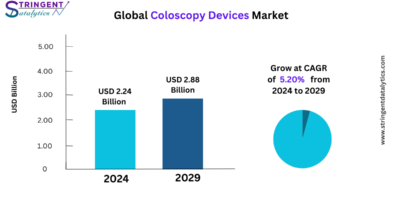The High Content Screening (HCS) Products Market is experiencing significant growth, driven by advancements in cell imaging and analysis technologies, increasing demand for drug discovery and development, and the rising adoption of automated high-throughput screening techniques. High content screening refers to the automated analysis of cells and subcellular structures using fluorescent imaging and advanced image analysis algorithms, enabling the study of complex cellular processes and identification of potential drug candidates.
Key Factors Driving the High Content Screening Products Market:
- Growing Demand for Drug Discovery and Development: The need for more efficient and cost-effective methods in drug discovery and development is driving the demand for high content screening products, which enable the rapid screening of large compound libraries for drug candidates.
- Advancements in Imaging Technologies: Continuous advancements in microscopy, fluorescence imaging, and automated imaging platforms are enhancing the capabilities and throughput of high content screening systems, allowing for more detailed and comprehensive analysis of cellular phenotypes.
- Rising Focus on Phenotypic Screening: Phenotypic screening approaches, which involve the analysis of cellular phenotypes and functional responses, are gaining prominence in drug discovery due to their ability to identify novel drug targets and mechanisms of action.
- Shift towards 3D Cell Culture Models: The adoption of three-dimensional (3D) cell culture models in high content screening is increasing, as they better mimic the in vivo microenvironment and offer more physiologically relevant results compared to traditional two-dimensional (2D) cell culture models.
- Automation and High Throughput Screening (HTS): Automation of high content screening workflows and the integration of robotic systems are enabling high throughput screening of large compound libraries, accelerating the drug discovery process.
Key Segments within the High Content Screening Products Market:
- Instruments and Systems:
- High Content Screening Platforms: Automated imaging systems equipped with fluorescence microscopy, robotic handling, and image analysis software for high throughput screening of cellular samples.
- Microscopes and Imaging Systems: Advanced microscopy systems with fluorescence imaging capabilities and automated stage control for high content imaging.
- Cell Analyzers and Sorters: Flow cytometry-based systems for high content analysis and sorting of cells based on multiple parameters.
- Consumables and Reagents:
- Assay Kits and Reagents: Fluorescent dyes, antibodies, and other reagents used for labeling cellular components and analyzing specific cellular processes.
- Microplates and Cell Culture Consumables: Multiwell plates, cell culture inserts, and other consumables used for sample preparation and analysis in high content screening assays.
- Software and Data Analysis Tools:
- Image Analysis Software: Software platforms for automated image analysis, feature extraction, and quantification of cellular phenotypes.
- Data Analysis and Visualization Tools: Software tools for statistical analysis, data mining, and visualization of high content screening data.
- Application:
- Drug Discovery and Development: Screening of compound libraries for drug candidates, target identification, and mechanism of action studies.
- Toxicity Screening and Safety Assessment: Assessment of drug-induced toxicity and safety profiling using cellular models.
- Cellular Pathway Analysis and Functional Genomics: Analysis of cellular pathways, signaling networks, and gene function using high content screening approaches.
- Stem Cell Research and Regenerative Medicine: Investigation of stem cell differentiation, tissue engineering, and regenerative medicine applications.
Market Drivers and Trends:
- Integration of Artificial Intelligence (AI) and Machine Learning: The integration of AI and machine learning algorithms into high content screening workflows is enabling more efficient image analysis, pattern recognition, and predictive modeling of cellular responses.
- Miniaturization and Microfluidics: Miniaturization of high content screening assays and the development of microfluidic platforms are enabling higher throughput, reduced sample and reagent consumption, and more precise control over cellular microenvironments.
- Multiplexing and Multiparametric Analysis: Increasing demand for multiplexed assays and multiparametric analysis techniques, which allow simultaneous measurement of multiple cellular parameters and endpoints in a single assay.
- Collaborative Research Initiatives: Collaboration between academic research institutions, pharmaceutical companies, and technology providers to develop standardized protocols, reference datasets, and best practices for high content screening.
- Expanding Applications in Personalized Medicine and Precision Oncology: High content screening technologies are being increasingly used in personalized medicine initiatives, patient stratification, and precision oncology research to identify patient-specific drug responses and therapeutic targets.
Challenges:
- Complexity of Data Analysis: Analyzing and interpreting the large volumes of data generated by high content screening assays can be challenging, requiring specialized expertise in image analysis, bioinformatics, and computational biology.
- Standardization and Quality Control: Ensuring standardization and reproducibility of high content screening assays across different laboratories and platforms, as well as implementing robust quality control measures to minimize variability.
- Cost and Accessibility: The initial investment and ongoing costs associated with high content screening instruments, reagents, and software may limit accessibility, particularly for smaller research laboratories and academic institutions.
- Cellular Model Complexity: The development and optimization of physiologically relevant cellular models, including 3D organoids and patient-derived cell cultures, present technical challenges in high content screening.
- Ethical and Regulatory Considerations: Addressing ethical considerations related to the use of human-derived cells and tissues in high content screening assays, as well as complying with regulatory requirements for drug screening and safety assessment.
Future Outlook:
The high content screening products market is expected to continue growing, driven by ongoing technological advancements, increasing adoption of phenotypic screening approaches, and expanding applications in drug discovery, toxicity screening, and functional genomics. Future trends are likely to include the integration of AI-driven automation, the development of more advanced cellular models, and the application of high content screening technologies in personalized medicine and precision healthcare initiatives. Collaboration between industry stakeholders, regulatory agencies, and academic research institutions will be crucial in addressing challenges and maximizing the potential of high content screening products in advancing biomedical research and drug development.
Click Here, To Get Free Sample Report https://stringentdatalytics.com/sample-request/high-content-screening-products-market/16495/
Market Segmentations:
Global High Content Screening Products Market: By Company
Becton Dickinson
Thermo Fisher Scientific
GE Healthcare
Olympus LifeScience
PerkinElmer
Merck Millipore
Danaher
Yokogawa Electric
Sysmex
Thorlabs
Valeo
Montaplast
Global High Content Screening Products Market: By Type
Consumables
Instruments
Software
Service
Accessories
Global High Content Screening Products Market: By Application
Pharmaceutical
Biotechnology Companies
Academic and Research Institutes
Others
Global High Content Screening Products Market: Regional Analysis
The regional analysis of the global High Content Screening Products market provides insights into the market’s performance across different regions of the world. The analysis is based on recent and future trends and includes market forecast for the prediction period. The countries covered in the regional analysis of the High Content Screening Products market report are as follows:
North America: The North America region includes the U.S., Canada, and Mexico. The U.S. is the largest market for Cold-chain Pharma in this region, followed by Canada and Mexico. The market growth in this region is primarily driven by the presence of key market players and the increasing demand for the product.
Europe: The Europe region includes Germany, France, U.K., Russia, Italy, Spain, Turkey, Netherlands, Switzerland, Belgium, and Rest of Europe. Germany is the largest market for Cold-chain Pharma in this region, followed by the U.K. and France. The market growth in this region is driven by the increasing demand for the product in the automotive and aerospace sectors.
Asia-Pacific: The Asia-Pacific region includes Singapore, Malaysia, Australia, Thailand, Indonesia, Philippines, China, Japan, India, South Korea, and Rest of Asia-Pacific. China is the largest market for Cold-chain Pharma in this region, followed by Japan and India. The market growth in this region is driven by the increasing adoption of the product in various end-use industries, such as automotive, aerospace, and construction.
Middle East and Africa: The Middle East and Africa region includes Saudi Arabia, U.A.E, South Africa, Egypt, Israel, and Rest of Middle East and Africa. The market growth in this region is driven by the increasing demand for the product in the aerospace and defense sectors.
South America: The South America region includes Argentina, Brazil, and Rest of South America. Brazil is the largest market for Cold-chain Pharma in this region, followed by Argentina. The market growth in this region is primarily driven by the increasing demand for the product in the automotive sector.
Click Here, To Buy Premium Report https://stringentdatalytics.com/purchase/high-content-screening-products-market/16495/?license=single
Key Indicators Analysed
Market Players & Competitor Analysis: The report covers the key players of the industry including Company Profile, Product Specifications, Production Capacity/Sales, Revenue, Price and Gross Margin 2016-2027 & Sales with a thorough analysis of the market’s competitive landscape and detailed information on vendors and comprehensive details of factors that will challenge the growth of major market vendors.
Global and Regional Market Analysis: The report includes Global & Regional market status and outlook 2016-2027. Further the report provides break down details about each region & countries covered in the report. Identifying its sales, sales volume & revenue forecast. With detailed analysis by types and applications.
Market Trends: Market key trends which include Increased Competition and Continuous Innovations.
Opportunities and Drivers: Identifying the Growing Demands and New Technology
Porters Five Force Analysis: The report provides with the state of competition in industry depending on five basic forces: threat of new entrants, bargaining power of suppliers, bargaining power of buyers, threat of substitute products or services, and existing industry rivalry
About Stringent Datalytics
Stringent Datalytics offers both custom and syndicated market research reports. Custom market research reports are tailored to a specific client’s needs and requirements. These reports provide unique insights into a particular industry or market segment and can help businesses make informed decisions about their strategies and operations.
Syndicated market research reports, on the other hand, are pre-existing reports that are available for purchase by multiple clients. These reports are often produced on a regular basis, such as annually or quarterly, and cover a broad range of industries and market segments. Syndicated reports provide clients with insights into industry trends, market sizes, and competitive landscapes. By offering both custom and syndicated reports, Stringent Datalytics can provide clients with a range of market research solutions that can be customized to their specific needs.
Contact Us
Stringent Datalytics
Contact No- +1 346 666 6655
Email Id- sales@stringentdatalytics.com
Web- https://stringentdatalytics.com/




Leave a Reply